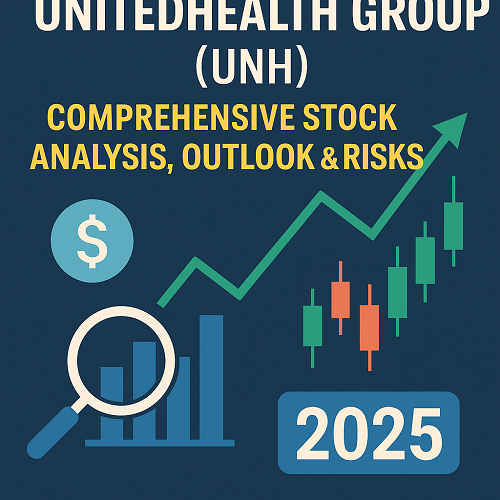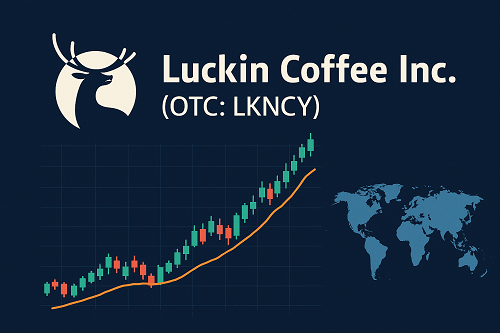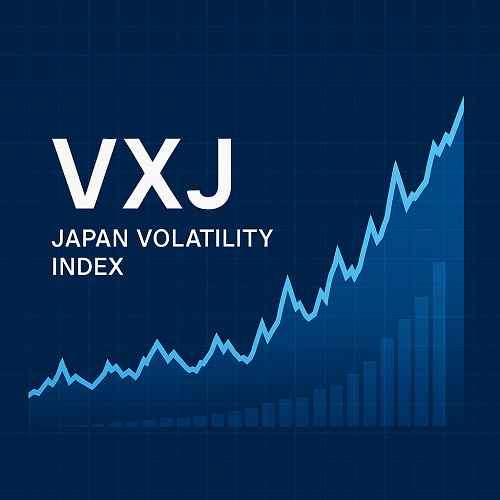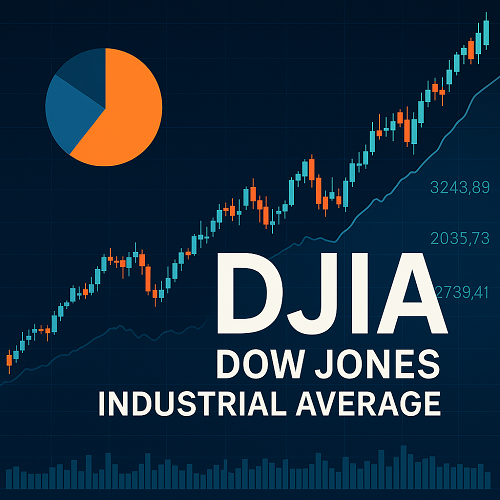UnitedHealth Group (Ticker: UNH) is one of the largest and most diversified health care companies in the U.S., combining health insurance operations (UnitedHealthcare) and medical services / pharmacy / analytics (Optum). Investors are often interested in the UNH stock price to assess company performance.
However, after years of relatively stable growth, UNH is now under pressure from rising medical costs, regulatory scrutiny, and a leadership shake-up. In mid-2025, the company suspended its full-year 2025 outlook and its CEO Andrew Witty resigned for “personal reasons,” triggering a steep repricing of investor expectations.
Investors are now asking: is UNH’s current valuation a rare buying opportunity, or is it a value trap? This article analyzes that question in depth.
Key themes / takeaways:
- Surge in medical cost trends has squeezed margins, especially within Medicare Advantage and Medicaid portfolios.
- The company’s reinstated earnings outlook is well below earlier guidance, reflecting more conservative assumptions.
- Institutional investors, including Berkshire Hathaway, have recently initiated or increased positions in UNH, which signals that value investors see opportunity.
- Valuation now appears more attractive relative to peers, but risks are elevated (regulatory, reimbursement, litigation).
- Any rebound depends heavily on UNH’s ability to rein in costs, deliver efficiency via its Optum assets, and restore investor confidence.
Next, let’s examine the business model and where the pressures are coming from in more detail.
Company Overview & Business Model
Corporate Structure & Segments
UnitedHealth operates primarily via two business platforms:
- UnitedHealthcare: Offers health benefit plans—commercial, Medicaid, Medicare Advantage, employer-sponsored, individual/family plans.
- Optum: Comprises three segments:
- OptumHealth (care delivery, care management, wellness)
- OptumInsight (analytics, software, consulting)
- OptumRx (pharmacy benefit management, home delivery, specialty pharmacy)
This dual model gives UNH both scale in insurance underwriting and operational leverage via healthcare services and technology.
Competitive Position & Moat
UnitedHealth has several competitive advantages:
- Scale & Membership Base: It has tens of millions of members (Medicare, Medicaid, employer, individual), enabling negotiating power with providers and drug suppliers.
- Vertical Integration via Optum: Ability to internalize parts of care delivery, pharmacy services, and analytics provides margin opportunities and operational synergies.
- Data & Analytics Capabilities: OptumInsight’s strength in analytics and consulting can generate higher-margin revenue outside of pure insurance underwriting.
- Barriers to Entry: Regulatory licensing, provider networks, and capital intensity in payer/provider markets make it difficult for new players to scale quickly.
That said, rising costs and regulatory risk remain enduring threats even for a company with scale.
Recent News & Catalysts
Here is a timeline of pivotal events shaping UNH’s trajectory in 2025:
- May 2025: UNH suspends its full-year 2025 guidance due to unexpectedly high medical cost trends, particularly in Medicare Advantage. The announcement triggered a stock drop of ~17.8%. At the same time, CEO Andrew Witty resigns abruptly, replaced by then-Chairman Stephen Hemsley.
- July 2025: In Q2 results, UNH reports a net $6.5 billion unfavorable impact from medical cost trends versus prior expectations. It reinstates its outlook, but with guidance far below prior estimates. Adjusted EPS is lowered to as low as ~$16 versus earlier forecasts in the $26 range.
- Institutional Moves: Berkshire Hathaway disclosed a stake in UNH in Q2 2025 (~5 million shares). This reveals that some value-focused investors are betting that the downside may be overdone.
- Analyst Re-ratings: Some long-term bulls have reduced ratings or removed targets due to weak visibility and uncertainty.
- Ongoing Investigations & Scrutiny: UNH also faces possible investigations related to billing practices, anti-competitive behavior, and Medicare/Medicaid compliance. These regulatory overhangs heighten risk.
Together, these factors have materially altered investor sentiment and the risk-reward profile of UNH.
Financial Performance & Key Metrics
Below is an up-to-date snapshot of UNH’s financials and performance, followed by insights into trends and challenges.
Recent Metrics & Ratios
According to StockAnalysis:
- Market Cap: ~ USD 321 billion
- EPS (TTM): ~ 23.12
- P/E Ratio: ~ 15.34 ×
- Dividend: USD 8.84 per share; Yield ~2.49%
- Shares Outstanding: ~905.67 million
- Beta: ~0.48 (low volatility relative to broad market)
- 52-Week Range: USD 234.60 – USD 630.73
Morningstar also notes solid profitability metrics compared to peers:
- Return on Equity (ROE), normalized: ~24.97%
- Return on Assets (ROA), normalized: ~7.75%
Historical Growth & Trends
Over recent years, UNH has grown revenue steadily through expanding its offering, increasing membership, and leveraging its Optum segments. But in 2025, cost pressures have disrupted that trajectory.
From Q2 2025 disclosures:
- Revenue growth was +12.9% YoY, but margin contraction was substantial due to $6.5B in unplanned medical costs.
- The margin squeeze was particularly acute in Medicaid and Medicare Advantage lines.
The key trend to watch is whether UNH can arrest further cost overruns and return to disciplined underwriting.
Cash Flow, Liquidity & Capital Structure
- UNH historically has generated significant operating cash flow, allowing continued investment in infrastructure, acquisitions, and share buybacks.
- The company carries debt but within manageable levels given its cash-generating capabilities.
- Dividend payout ratio remains sustainable (historically under 50–60%), but pressures on margins could compress free cash flow in 2025–2026.
Valuation & Comparative Analysis
How does UNH stack up versus peers, and is its current valuation attractive?
Relative Valuation vs Peers
Select peer group: Elevance Health (ELV), Humana (HUM), Cigna (CI), CVS Health (CVS), Centene (CNC).
Key multiples to compare:
| Metric | UNH | Peer Median / Sample Benchmark |
|---|---|---|
| P/E (Trailing / Forward) | ~15.3× (TTM) | Peers often trade at 12–25× depending on growth & risk |
| Price / Book (P/B) | ~3.3× | Many insurers trade in 1.5–4× range |
| Dividend Yield | ~2.4–2.5% | Relatively healthy yield compared to peers in sector |
| PEG Ratio | > 1 (accounting for growth) | Varied, depends heavily on growth assumptions |
UNH’s valuation now appears relatively cheap compared to historical norms, particularly given its scale and diversification. The depressed valuation reflects investor skepticism driven by 2025 uncertainty.
Discounted Cash Flow & Intrinsic Estimates
A rough DCF approach might proceed as follows (for illustration; actual inputs should be refined):
- Base case assumptions:
- Revenue growth dragging down to single digits in 2025–2026, recovering gradually.
- Operating margins expanding slowly as cost control improves.
- Discount rate (WACC) ~7–9%, terminal growth rate 2–3%.
- Valuation estimate:
Under modest assumptions, intrinsic value might lie 10–25% above current price—if UNH can execute. But downside risks could push fair value lower, especially if medical costs remain elevated or regulatory burdens increase.
Thus, the margin for error is small — success hinges on execution more than valuation.
Technical Analysis & Price Patterns
Beyond fundamentals, technicals offer insight on sentiment, trend strength, and key support/resistance zones.
Price Action & Chart Patterns
- UNH has seen pronounced volatility in 2025, with a steep descent from its mid-2024 highs.
- The price is now trading near key support levels that were prior resistance zones (between US$250–350) — if broken downward, further downside risks exist.
- If it sustains a base and volume starts to pick up, a rebound towards prior resistance zones (USD 400–450) becomes plausible.
Moving Averages & Momentum
- Watch the 50-day and 200-day moving averages: crossing above signifies a mean reversion potential.
- Relative Strength Index (RSI) can show oversold conditions if below ~30.
- Volume trends will be critical — notable accumulation by institutions or spikes in trading volume may presage a reversal.
Sentiment Indicators & Flow
- Options market skew, institutional filings, insider trading moves can offer leading signals.
- Given the recent negative sentiment, contrarian signals (e.g. heavy put-to-call ratio extremes) may coincide with trend reversals.
Risk Factors & Headwinds
No analysis is complete without a close examination of downside risks. Key risks for UNH include:
- Escalating Medical Cost Trends
The central issue: utilization, inflation in provider reimbursement, and chronic disease management costs (especially within Medicare Advantage). If trends worsen, margins may not recover. - Regulatory & Reimbursement Risk
Changes in government policy, CMS (Centers for Medicare & Medicaid Services) rules, drug pricing legislation, or cuts in reimbursements could tilt profitability downward. - Litigation & Compliance Exposure
UNH faces scrutiny over billing, claims practices, anti-competitive concerns, and Medicare/Medicaid audits. - Leadership & Execution Risk
The CEO transition and internal restructuring may cause short-term distractions or missteps. - Competition & Disruption
New entrants, technology-driven care models, and alternative payers (e.g. value-based care challengers) may pressure margins in the long run. - Macroeconomic / Market Risk
A recession, rising rates, or tightening credit conditions could reduce demand, increase defaults, or compress valuations across the sector.
Given these risks, investors must monitor trailing indicators closely (e.g. cost trends, earnings guidance, regulatory developments).
2025–2026 Outlook & Forecasts
Given current challenges, below is a scenario-based outlook:
Scenario A: Base Case (Moderate Recovery)
- UNH gradually regains cost discipline; medical cost trend moderates by late 2025.
- Q4–2025 and full-year 2026 margins improve modestly.
- EPS in 2025 lands around USD 16–18 (as per revised guidance) with gradual ramp in 2026 toward USD 20–22.
- Equity price recovers to USD 400–430 by end of 2026, assuming valuation multiple expansion.
Scenario B: Bull Case (Outperformance)
- UNH effectively manages cost overrun; Optum delivers strong margins.
- New initiatives (e.g. AI / analytics, value-based care contracts) accelerate margin gains.
- EPS in 2026 breaches USD 22–25; valuation multiple returns to 18–20×.
- Share price could hit USD 450–500+.
Scenario C: Bear Case (Further Weakening)
- Medical cost trend continues to deteriorate; regulatory headwinds intensify.
- Margins compress further; EPS falls below USD 14.
- Valuation contracts (P/E ~12×) → share price drops to USD 200–250.
Which scenario plays out depends heavily on near-term earnings guidance, regulatory environment, and UNH’s cost controls.
Investment Thesis & Scenarios
Bullish Case Summary
- Current market pricing may already discount much of the negative news, leaving upside if execution is sound.
- Berkshire’s investment signals that value investors see mispricing.
- UNH’s strong balance sheet and operational scale give it flexibility to absorb short-term volatility.
- The long-term potential of Optum’s technology and analytics businesses may reaccelerate growth beyond insurance underwriting constraints.
Bearish / Caution Case
- If medical costs remain uncontrolled, investor confidence may erode further.
- Regulatory shocks or adverse rulings could enforce constraints or penalties.
- Leadership transition risks and execution missteps could delay recovery.
- Broader market volatility or a downturn in health care sector sentiment could derail even a well-executed rebound.
Suggested Strategies
- Long-term core position (for patient investors): If you believe UNH can execute scenario A or B, buying near current levels could yield high multipliers over 2–3 years.
- Hedged position: Use option collars or protective puts to limit downside while keeping upside exposure.
- Staged entry: Phased purchases based on performance, earnings guidance, and cost trends.
- Avoid leverage: Given the volatility environment and execution risk, avoid aggressive margin-based buys.
Frequently Asked Questions (FAQs)
Q1: Is UNH a good dividend stock now?
UNH pays a solid dividend (~2.4–2.5%) with a history of growth, and its payout ratio has been sustainable. However, if earnings drop sharply, dividend coverage may come under pressure.
Q2: What triggered the 2025 guidance suspension?
Unanticipated and accelerating medical cost trends—especially in Medicare Advantage and Medicaid—pushed operating margins far below expectations, forcing management to revoke prior guidance.
Q3: How much downside is left?
In a worst-case scenario, downside to USD 200–250 is possible if costs remain out of control and multiples compress further. The base case downside might be limited, but execution is crucial.
Q4: What catalysts could spark a rebound?
- A better-than-expected Q3 or Q4 earnings report with margin improvement
- Evidence of medical cost trend reversion
- Positive regulatory or legislative changes
- Institutional accumulation or new insider buying
Q5: How does UNH compare to ELV, HUM, CI?
UNH is more diversified (insurance + services) and larger scale. While peers might offer sharper near-term bullish plays, UNH offers more balance and resilience, especially if it recovers.
Conclusion: Buy / Sell / Hold?
Given its current valuation, diversification, and institutional interest, UNH presents a compelling opportunity, but with elevated execution risk.
If you have conviction in UNH’s ability to manage costs, stabilize margins, and restore growth, it merits a moderate to overweight position (with risk management). But aggressive buying without hedges is inadvisable given the visibility issues.
I would categorize it as a “Buy with Caution / Tactical Entry” at present levels (if below ~USD 380), with close monitoring of Q3–Q4 earnings, management commentary, and cost trends.





 XAUT-USD
XAUT-USD  AMD
AMD  MARA
MARA  SHOP
SHOP  BULL
BULL  CL=F
CL=F